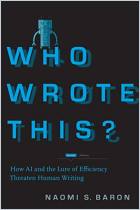This freeCodeCamp video offers a tutorial on “prompt engineering,” a relatively new and highly lucrative profession. Prompt engineering emerged as a result of the rise of AI tools, and its aim is refining the AI-human relationship, rendering it more efficient and productive. Whether they’re seeking information or getting poems written, prompt engineers create and manage “prompts” to ensure the effectiveness of AI over time. Prompt engineers’ responsibilities include keeping an up-to-date prompt library, and more generally keeping track of their findings. The video’s useful demonstrations are on ChatGPT-4.
Large language models are machine learning tools that analyze large amounts of data for correlations and patterns.
At this point, artificial intelligence is the simulation of certain properties of human intelligence. Unlike you, for instance, your computer isn’t sentient. When people refer to AI technologies like ChatGPT, they are mostly referring to some form of “machine learning.”Machine learning programs like large language models (LLMs) analyze large amounts of data to decipher correlations and patterns – and predict what comes next.
The most high-powered LLMs are effectively trained on everything in a given language – they are essentially dizzying experts in that language’s grammar and usage. Yet with AI rapidly growing in power and capacity, even experts have difficulty getting a handle on its output. Properly crafted prompts can help elicit useful responses, and save you or your business time and money.
Prompt engineering helps people manage and guide AI’s results.
Some questions you might ask would have only one possible answer, such as simple questions in arithmetic. After all, 1+1 is only...


















Comment on this summary or Comenzar discusión